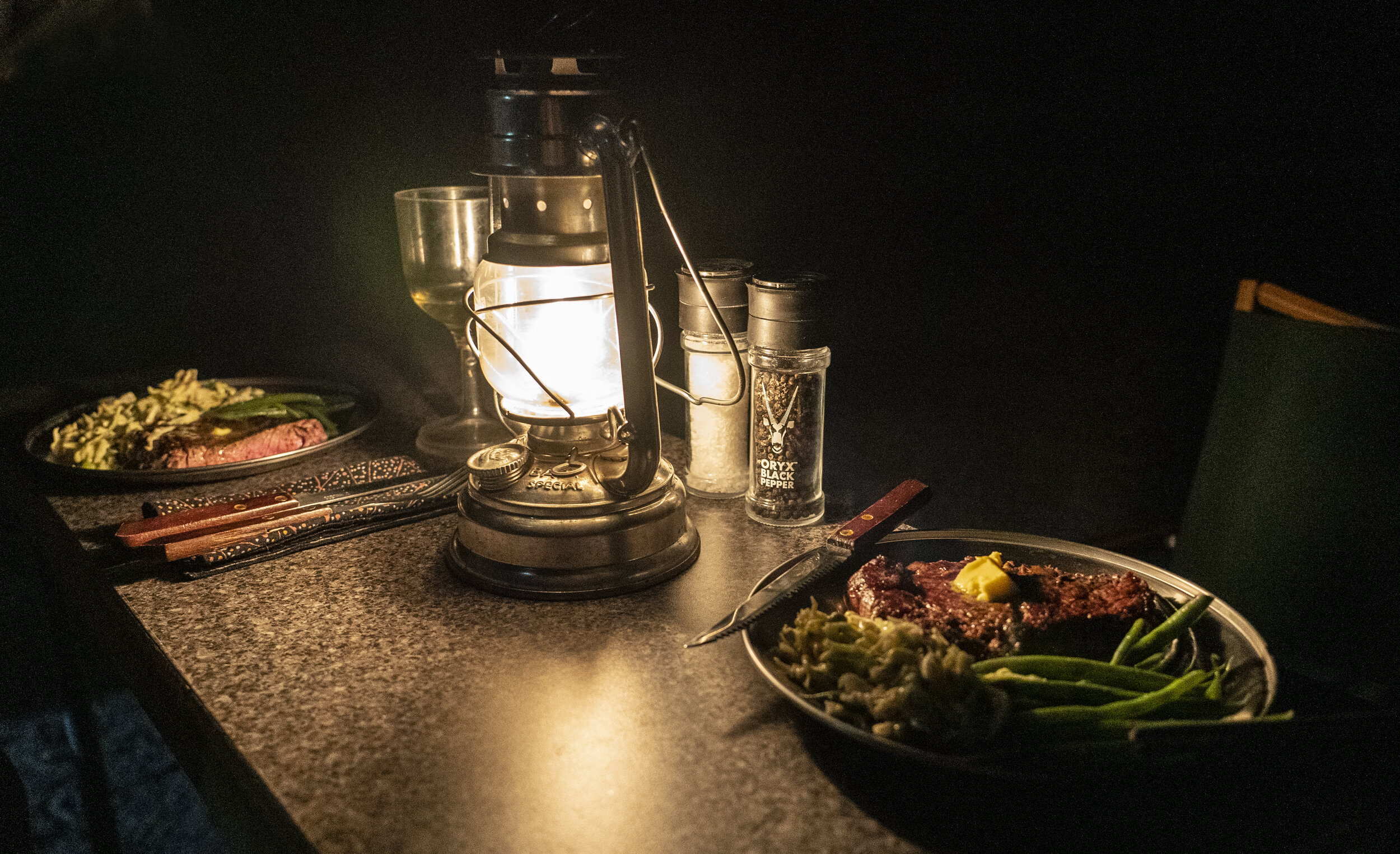The kerosene lantern . . . still perfect.
After a (very) leisurely holiday break, I thought I would bring in the new year with an eye-rollingly obvious metaphorical piece on camp lighting, symbolizing 2021’s new beginning in either calendar or political terms, or both if you prefer. (Edit: I started this piece before January 7. Perhaps I need to wait a bit before actually turning on any metaphorical lights in the darkness.)
This is a specific bit of camp lighting, however, and one we keep coming back to no matter how much we experiment with alternatives. I’m referring to the classic kerosene lantern (aka hurricane lantern or storm lantern).
The hurricane lantern—that is, the universal style you’ll recognize that incorporates a hollow tube on each side of the glass globe, and a perforated cap above—is not the simple device most people believe. It came about as a product of evolution and ingenuity.
The first moderately efficient oil lamp was invented by Francois-Pierre Aime Argand, the son of a Swiss watchmaker, in the late 1700s. His lamp employed a fuel tank at the bottom, of metal or pottery, with a wick controlled by a knob, and a glass globe to provide some protection for the flame. It was a huge improvement on earlier, open-flame oil lamps with no control, which flickered with the slightest air movement, but not very bright due to poor oxygen supply, and still susceptible to gusts of wind. Also, if tipped over or broken it could easily start a fire.
Later oil lamps incorporated perforated rings at the base of the globe, which allowed fresh air to enter at the base of the flame, creating a hotter and thus brighter light. These were still susceptible to gusts, however. These lamps are referred to as “dead flame” lamps, since they rely on a simple, unchanneled supply of air.
In 1869 a young man named John Irwin, whose father had complained about oil lamps that blew out, received a patent for the “hot blast” lantern, which employed hollow tubes arcing from the base of the burner assembly to the vented top. These tubes returned some of the heated air from the burning wick to the base, and by providing this draft-free supply almost completely shielded the flame from gusts or movement. Robert Dietz, a manufacturer of oil lamps in New York, quickly bought the rights to produce the hot blast lantern.
Four years later Irwin introduced the even more revolutionary cold blast lantern, which has survived nearly unaltered to this day. In a cold blast lantern, the hot air rising from the flame, which is depleted in oxygen, is vented away from the tubes, which draw in only fresh air to feed the flame, significantly enhancing efficiency. Another happy characteristic of the cold blast style is that if the lantern is tipped over, the flame extinguishes itself, an enormous benefit in safety. While Dietz makes a retro hot blast model, virtually all hurricane lanterns you find today are of the cold blast type.
The Dietz company went on to produce millions of cold blast kerosene lanterns, eventually starting production in China in 1957—at the time more in an effort to capture developing-world sales than to save production costs. As things turned out, of course, the China factory was the only one to survive.
Meanwhile, in 1877, a German silverware maker named Karl Hermann Nier started producing miner’s lamps and household lanterns. In 1902 he established the Nier-Feuerhand (literally, fire-hand) company and began manufacturing high-quality cold blast lanterns, incorporating many patented improvements along the way. By the 1930s the Feuerhand company was the largest maker of storm lanterns in the world.
The end of WWII changed that, as the family’s manufacturing facility was in Beierfeld, which became part of East Germany. The company’s machinery was confiscated and shipped to the Soviet Union, and the family fled to West Germany, where they eventually managed to resume production. Eventually rights to the name were bought by Petromax—a legendary maker of gas pressure lanterns. Todays’ Feuerhand company produces exactly one model, the #276 Baby Special, still made in Germany.
So . . . to our camp lighting—and, specifically, to our dining lighting.
Dining lighting is different than general camp lighting. We have an extensive collection of devices for the latter, ranging from plug-in 12V LED strips to rechargeable LED lanterns to propane lanterns to a pressurized white-gas Coleman lantern. The LED lamps are cold and harsh for atmospheric dining, and the pressure lanterns are too noisy at a small table. But candle lanterns, which we tried, are really not bright enough.
We were reminded about the correct way to do things by Graham Jackson and Connie Rodman, on a trip across Australia. We’d been experimenting with a (very nice) rechargeable LED lantern, but Graham and Connie had brought their customary kerosene lantern, and when both were put on a table the LED’s glow looked gruesomely sepulchral next to the golden yellow of the kerosene flame. We fixed things next trip by purloining one of the half-dozen Feuerhand lanterns we use for casual lighting at our off-the-grid desert place outside Tucson.
The Feuerhand #276 is Goldilocks perfect. It’s silent, casts a warm light exactly bright enough for comfortable dining and conversation without being glaring (look up and you can still see the stars), and simply adds a lovely comforting air to a camp meal. It’s not so big that it steals table space, yet runs for hours on a single fill.
Admittedly, a kerosene lantern is a bit more bother than a 12V appliance. It needs to be stored upright, and unless you’re also into charmingly obsolete brass camp stoves (more on that later), it takes fuel you can use in nothing else. But trust me, it’s worth it.
A wonderful source for kerosene lanterns and the history thereof is W.T. Kirkman, here.



